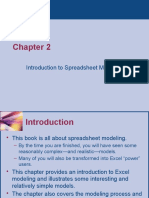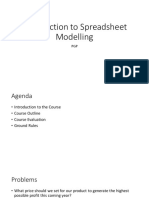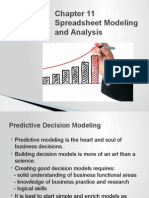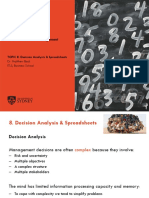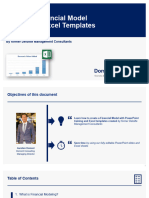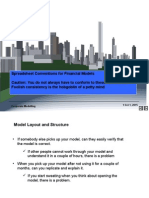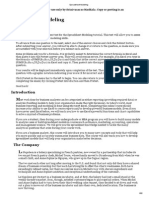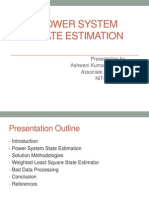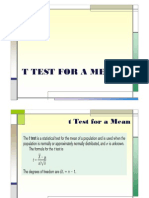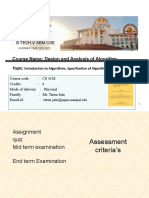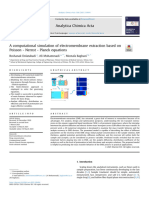0% found this document useful (0 votes)
48 views15 pagesLecture 1
This document provides an introduction to spreadsheet modeling for business decision making. It discusses how mathematical models can aid managerial decision making through abstraction, analysis, and interpretation. The key elements of models - decisions, outcomes, data, and structure - are explained using an example of determining advertising expenses. Best practices for spreadsheet design like organizing modules and using formatting are also covered. The document demonstrates various analysis techniques like what-if analysis and scenario analysis to evaluate decisions. Spreadsheet modeling is presented as a ubiquitous and low-cost tool for business problems despite some limitations.
Uploaded by
yeunghc519Copyright
© © All Rights Reserved
We take content rights seriously. If you suspect this is your content, claim it here.
Available Formats
Download as PDF, TXT or read online on Scribd
0% found this document useful (0 votes)
48 views15 pagesLecture 1
This document provides an introduction to spreadsheet modeling for business decision making. It discusses how mathematical models can aid managerial decision making through abstraction, analysis, and interpretation. The key elements of models - decisions, outcomes, data, and structure - are explained using an example of determining advertising expenses. Best practices for spreadsheet design like organizing modules and using formatting are also covered. The document demonstrates various analysis techniques like what-if analysis and scenario analysis to evaluate decisions. Spreadsheet modeling is presented as a ubiquitous and low-cost tool for business problems despite some limitations.
Uploaded by
yeunghc519Copyright
© © All Rights Reserved
We take content rights seriously. If you suspect this is your content, claim it here.
Available Formats
Download as PDF, TXT or read online on Scribd
/ 15










